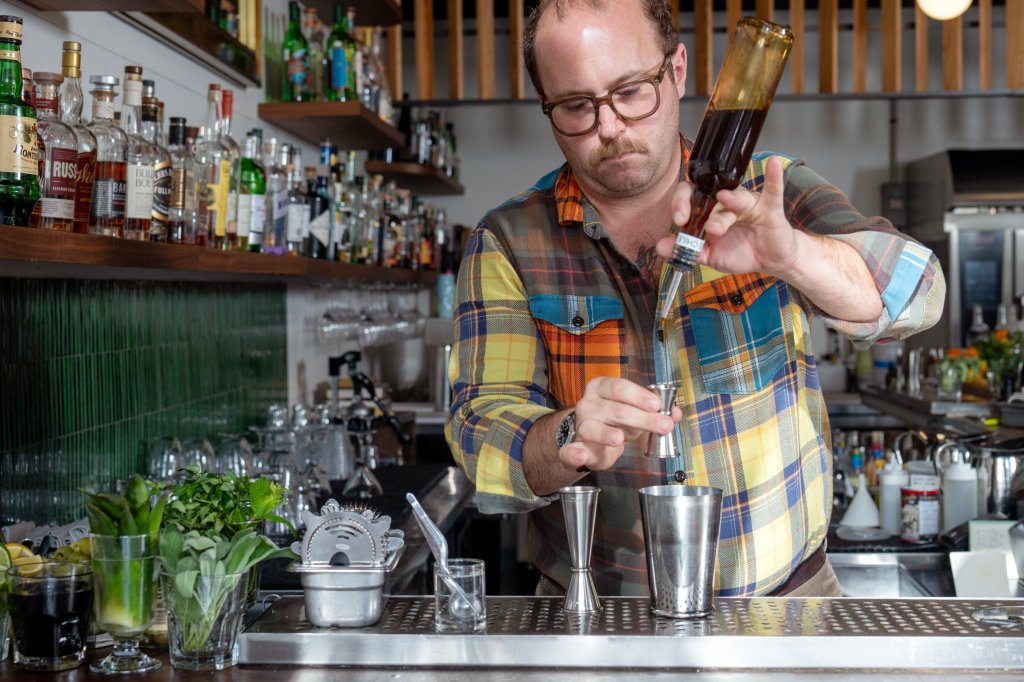
Portland resident Ava Swan has been sober for about four years. While she’s heartened that the quality and variety of nonalcoholic offerings at some area bars and restaurants are on the rise, the cost of house-made mocktails sometimes gives her sticker shock.
“I’m always going to indulge in a good mocktail regardless, but I find the price pretty high,” Swan said. “The alcoholic drinks are not that much more expensive than the mocktails. I feel it’s almost a deterrent for people who are interested in sobriety.”
Jamaica Ford, a recovering alcoholic and a bartender at The Portland Zoo, agrees. “I’m impressed with the mocktail scene, but I don’t like the direction it’s going,” she said. “I think anything above $10 is really pushing it.”
Like Swan, Ford is aware that bars have labor and rising ingredient costs to consider. “But people are missing the point with making nonalcoholic drinks so expensive,” Ford said. “It’s supposed to be about inclusivity, right?”
House-made mocktails at bars and restaurants around Greater Portland range from $8-$14, while craft cocktails on the same menus run about $12-$17. Though customers may balk at paying considerably more for their n/a drink than they would for soda or juice, some local beverage industry insiders defend the cost.
“Sometimes people will be like, ‘Wait a second, there’s no booze in it. Why are these things like 12, 13, 14 bucks?’ And I think that’s a knee-jerk reaction,” said Jordan Milne, founder and distiller of Hardshore Distilling Co., whose Washington Avenue tasting room in Portland offers a selection of mocktails that include variations on mules, whisky sours and dirty martinis. “Alcohol isn’t the only thing that’s driving the cost here.”
Like craft cocktails, mocktails have come a long way. For decades, they were little more than afterthoughts or uninspired riffs on a Shirley Temple: fruit juice topped with soda water, or ginger ale with a splash of Luxardo cherry juice. Many bar staffs now take mocktails quite seriously, and the best ones rival alcohol-based cocktails in their flavor complexity.
Arvid Brown, co-owner of Portland craft cocktail bars Room for Improvement and Cuties, said he empathizes with customers’ cost concerns, and aims to keep his mocktail offerings between $7-$10. “People are trying to be more mindful and moderate when they’re drinking mocktails, but a lot of times, they’re trying to save money too,” Brown said. “So to still charge them $12-$15 for a nonalcoholic cocktail sort of de-incentives them, and that’s where you end up getting people drinking a soda water instead of something you’re more intentional about putting on the menu.”
Area bar professionals assert that a quality mocktail takes about as much time and effort to conceive and produce as a craft cocktail, often with pricey ingredients. Perhaps more surprising, though, is the fact that the n/a spirits bartenders use in mocktails cost at least as much as regular liquor.
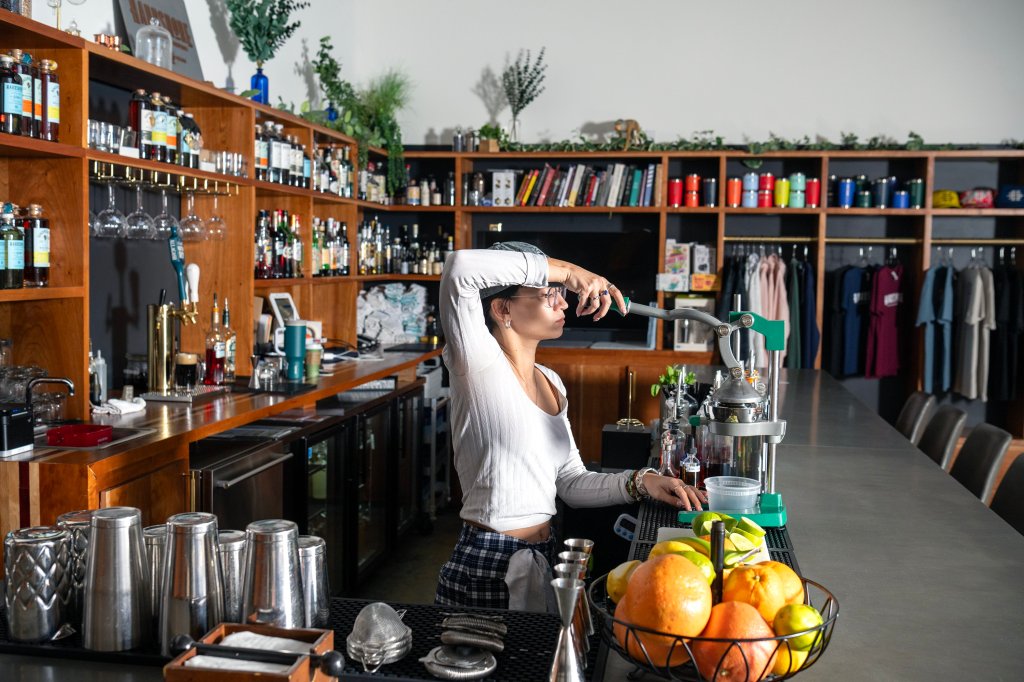
A WORK IN PROGRESS
The steep price of n/a spirits — which generally range from $30-$60 a bottle — is partly the result of an involved production process that starts with making an alcohol-based spirit, then removing the alcohol.
“They’re doing more work than a regular distillery,” Milne said.
“N/a spirits go through nearly the same steps as their alcoholic counterparts to begin with, and they can become more expensive because the equipment, technology and labor used in that de-alcoholization is costly,” said Trevor Wolfe, co-founder of The Zero Proof, a major online n/a beverage retailer based in Atlanta.
Texas-based ArKay Beverages uses a different method. They don’t begin by manufacturing alcohol for their products, which include zero-proof versions of rum, whisky, gin and vodka. Instead, they steep natural flavorings — both from spirits and from plant sources like vanilla, botanicals and capsaicin (the heat compound in chili peppers) — into water.
A liter of ArKay n/a spirits retails for $35 to $40. ArKay founder and CEO Reynald Grattagliano, a former perfumer and chemist, said his customers don’t seem bothered by the price. In fact, he says ArKay sales have “exploded” by 400% since 2020; he’s now selling 20,000 bottles a day.
Not all distillers are on board with the cost of n/a spirits. “We recognize that the n/a spirits market is actually quite pricey, and we’re not quite sure why,” said Caleb Landry, co-owner of Portland Distilling Company, makers of Goldie’s Gin. He suspects that the nonalcoholic distillers may be overstating the costs of their botanicals and other flavorings, adding that they also don’t have the burden of state and federal alcohol taxes.
“I personally believe they’re just marketed as premium products because the consumers that are looking for it are willing to pay for it,” Landry said.
Regardless, distillers of n/a spirits often use more botanicals and natural extracts in their blends than traditional distillers, to make up for what the alcohol would otherwise provide.
Milne explained that as a solvent, alcohol excels at absorbing aromas and flavors, known in the industry as terpene molecules. Botanicals, spices and other plant-based flavorings leave behind 60-90 milligrams of terpenes in a typical liter bottle of gin, Milne said, while a liter of n/a spirits has only about 2-6 milligrams of terpenes.
To mimic alcohol’s dryness, burn and fuller mouthfeel, n/a distillers sometimes add bitter tannins, fiery capsaicin or acacia gum to their blends. But critics argue the products still often fall short of the real thing. Wolfe said of the more than 1,000 n/a spirits he’s sampled over the past five years, perhaps only two seemed truly like liquor when tasted neat.
“What’s missing from most is what I call ‘the interruptor,'” Wolfe said. “They need something to slow the drinker down, a component that makes you stop and not want to gulp it down like juice or water. There’s still some innovation that needs to happen there for sure.”
“Honestly, I think there’s potentially a lot more that can go into creating a n/a spirit that feels, tastes and holds up in cocktails like a spirit would,” said Hunt & Alpine co-owner Briana Bononcini.
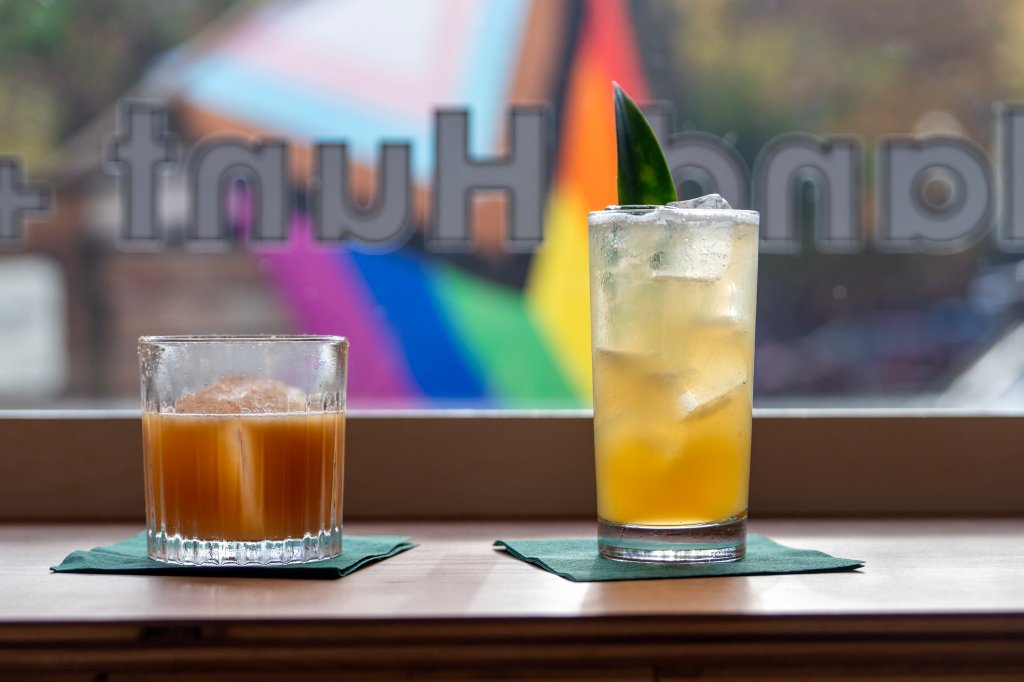
THE PRICE OF QUALITY AND EXPERTISE
Milne said because n/a spirits lack the “intensity of flavor” of regular liquors, mixologists have to lean heavily on freshly squeezed fruit and vegetable juices, fresh herbs, spices, alcohol-free bitters, and house-made syrups and foams. “Unfortunately, the materials available to us are also kind of expensive,” he said.
Staff at quality cocktail and restaurant bars take great pride in their concoctions, regardless of alcohol content. Bononcini said Hunt & Alpine’s bar team puts their new mocktail ideas through multiple rounds of tastes tests with the full staff before the drinks land on the menu, just as they do with their regular cocktails.
“It’s a lot of the same skillset and time,” Bononcini said. “It’s not just taking soda water and throwing some bitters in it. People really are trying to put together enjoyable flavor profiles that are also reminiscent of other cocktails, so it feels like you’re having a drink.
“To me, it’s always been interesting when people see a $12 mocktail on the menu that has gone through the whole process, the same way a cocktail is created, with ingredients that cost the same, but because there’s no alcohol in it, they don’t think of it as comparable to a cocktail,” she continued.” They think of it as a Coca-Cola. Just because you’re not getting drunk off something, doesn’t mean you shouldn’t be paying for quality ingredients and expertise in these things.”
“For what we do here,” echoed Brian “Cat” Catapang, beverage director and co-owner of Magnus on Water in Biddeford, “all of the same intention and steps and fresh product go into making a mocktail. It’s really the same thing to me at the end of the day.”
Catapang pointed to one of the mocktails at Magnus (all sell for $11), the Tea Totaller, which uses chrysanthemum tea and bottled verjus (the juice from unripe grapes). “Verjus is typically not cheap,” he said, and Magnus imports the item from Brazil, making it even more expensive these days because of 50% tariffs.
But aesthetically, it’s an important component: Unlike other tart fruit juices, verjus won’t cloud the mix, so the drink stays crystal clear. The bar finishes it with a little fresh lemon oil and soda water. “It drinks like a bright Champagne,” Catapang said.
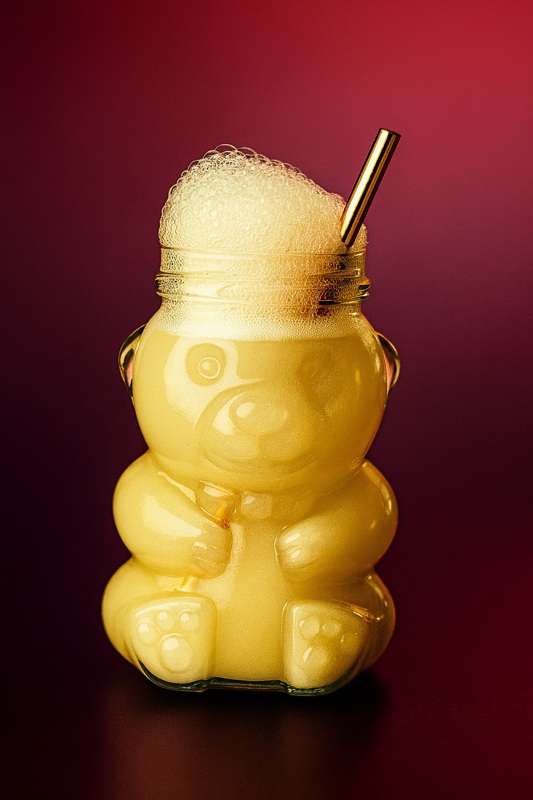
Other Magnus mocktails even come with a little theatrical razzle-dazzle. The Honey Bear, a blend of Coco Lopez coconut cream, fresh honeydew melon juice, lime juice and tonic, is served in a plastic bear-shaped honey container. When the bartender adds the finishing touch, a splash of Fever Tree ginger beer, it reacts with the rest of the ingredients to create a spume of bubbles that suddenly crowns the bear’s head.
“Everybody at the bar oohs and ahhs and asks what it is,” Catapang said. “And we tell them, ‘This is just a mocktail.’ They assume it’s a cocktail, because they think all of the effort goes into the cocktails.”
At Cuties, Brown offers the visually striking Bird of Play, a riff on a dark rum and Campari-based Jungle Bird. The bar uses n/a Ritual Bitter Aperitif for the base, coffee for rummy molasses notes, fresh lime and pineapple juices, and cinnamon-spiced pineapple foam as a topper.
“Appearance-wise, it looks impressive in the glass,” Brown said. “It looks like you’re being served a cocktail, with the pomp and circumstance people expect from modern cocktails.”
GROWING DEMAND
Area bar owners say they’ve seen an uptick in mocktail sales in the past five years, though the category is still a very small part of their overall beverage sales. Josh Miranda, owner of Blyth & Burrows, Papi and Via Vecchia, all in the Old Port in Portland, estimated that mocktail orders have gone from 2% to about 12% of total drink orders since 2020.
Catapang said mocktail interest at Magnus on Water seemed to peak at about 20% of total beverage sales in 2023, and they’re now selling less than half as much, which he attributes to living in fraught times. “I would say the ground feels quite unstable right now, and anytime the world finds itself in this kind of uncertainty, alcohol sales tend to rise.”
Nevertheless, about 500,000 cases of nonalcoholic spirits were sold in the U.S. in 2024, about 10 times as much as 2020, according to global drinks data and insights provider IWSR, and industry experts foresee continued growth for years to come.
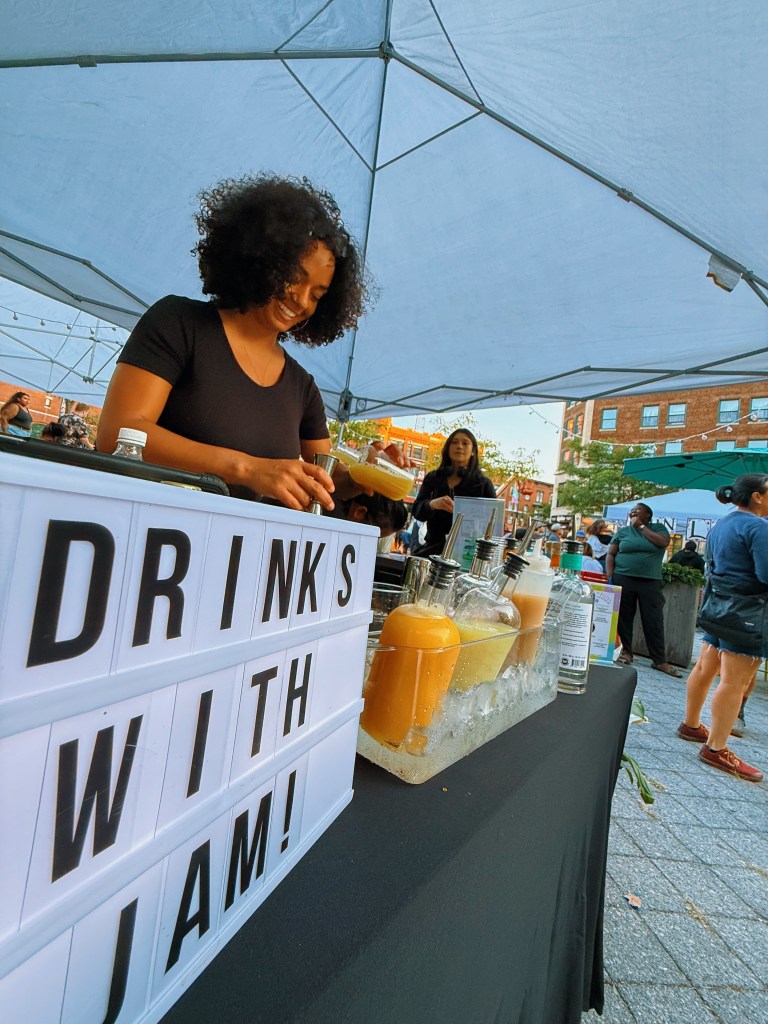
Milne and others noted that it’s likely just a matter of time before large liquor conglomeraates partner with or purchase small n/a distillers outright, leading to lower n/a spirits prices and, presumably, cheaper mocktails.
In the meantime, though, we’re already seeing less expensive mocktail options locally, at least on a small, limited scale. In her free time away from Portland Zoo, Jamaica Ford runs a pop-up mocktail bar series called Drinks with Jam.
At Tender Table BIPOC Night Market in Congress Square Park this September, she sold 13-ounce mocktails for $5-$10, even while using n/a spirits. Her faux pina colada featured Ritual n/a rum, fresh pineapple, orange and lime juices, strawberry simple syrup and coconut puree for $7, for instance.
Ford said her lower prices necessarily affect her bottom line, though she believes they also entice people to purchase more than just one mocktail, and her pop-ups are profitable.
“It’s possible to have a good drink without booze and without breaking the bank,” she said. “That’s something I want to be able to bring to the city, and it’s very doable.”

We invite you to add your comments. We encourage a thoughtful exchange of ideas and information on this website. By joining the conversation, you are agreeing to our commenting policy and terms of use. More information is found on our FAQs. You can modify your screen name here.
Comments are managed by our staff during regular business hours Monday through Friday as well as limited hours on Saturday and Sunday. Comments held for moderation outside of those hours may take longer to approve.
Join the Conversation
Please sign into your CentralMaine.com account to participate in conversations below. If you do not have an account, you can register or subscribe. Questions? Please see our FAQs.